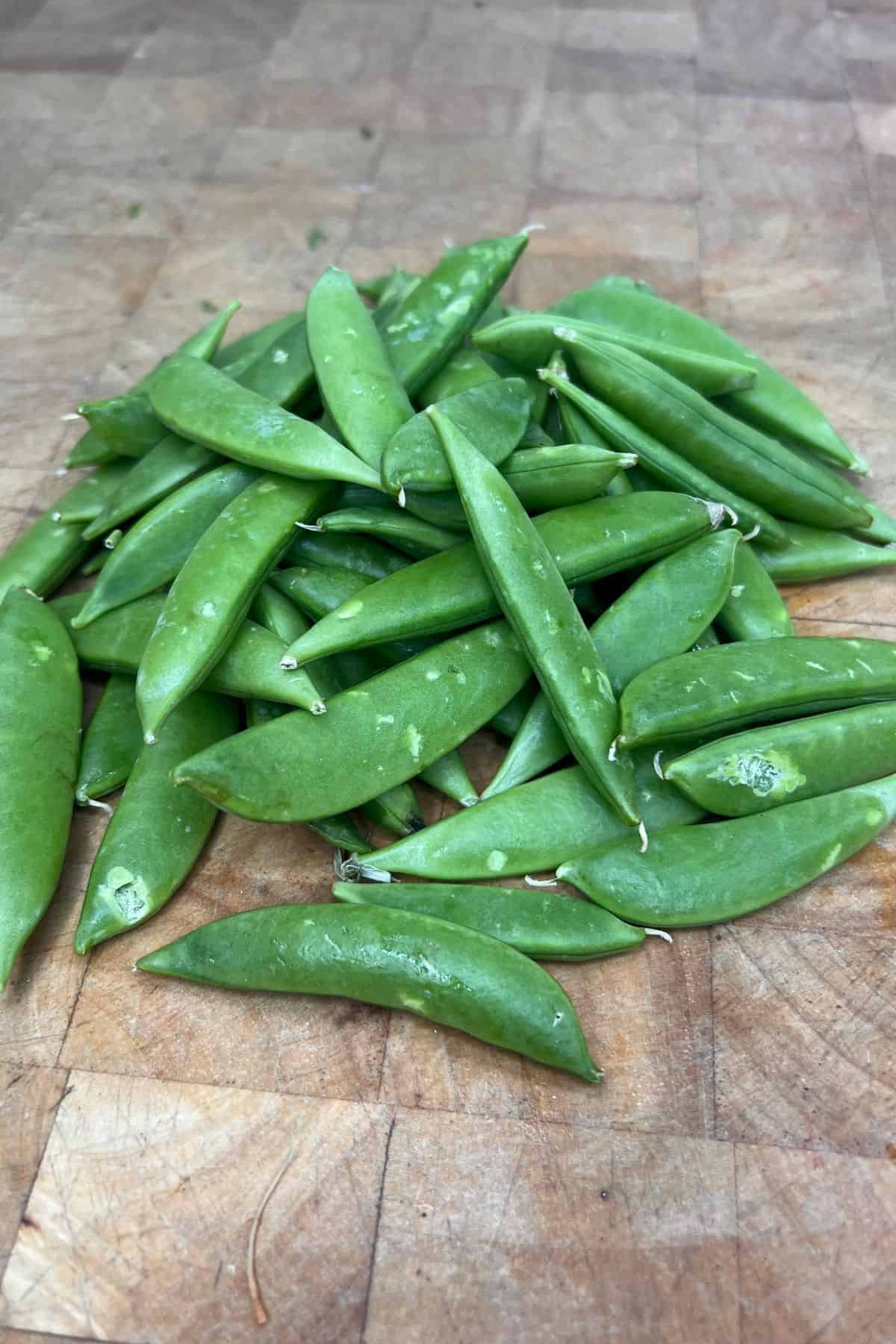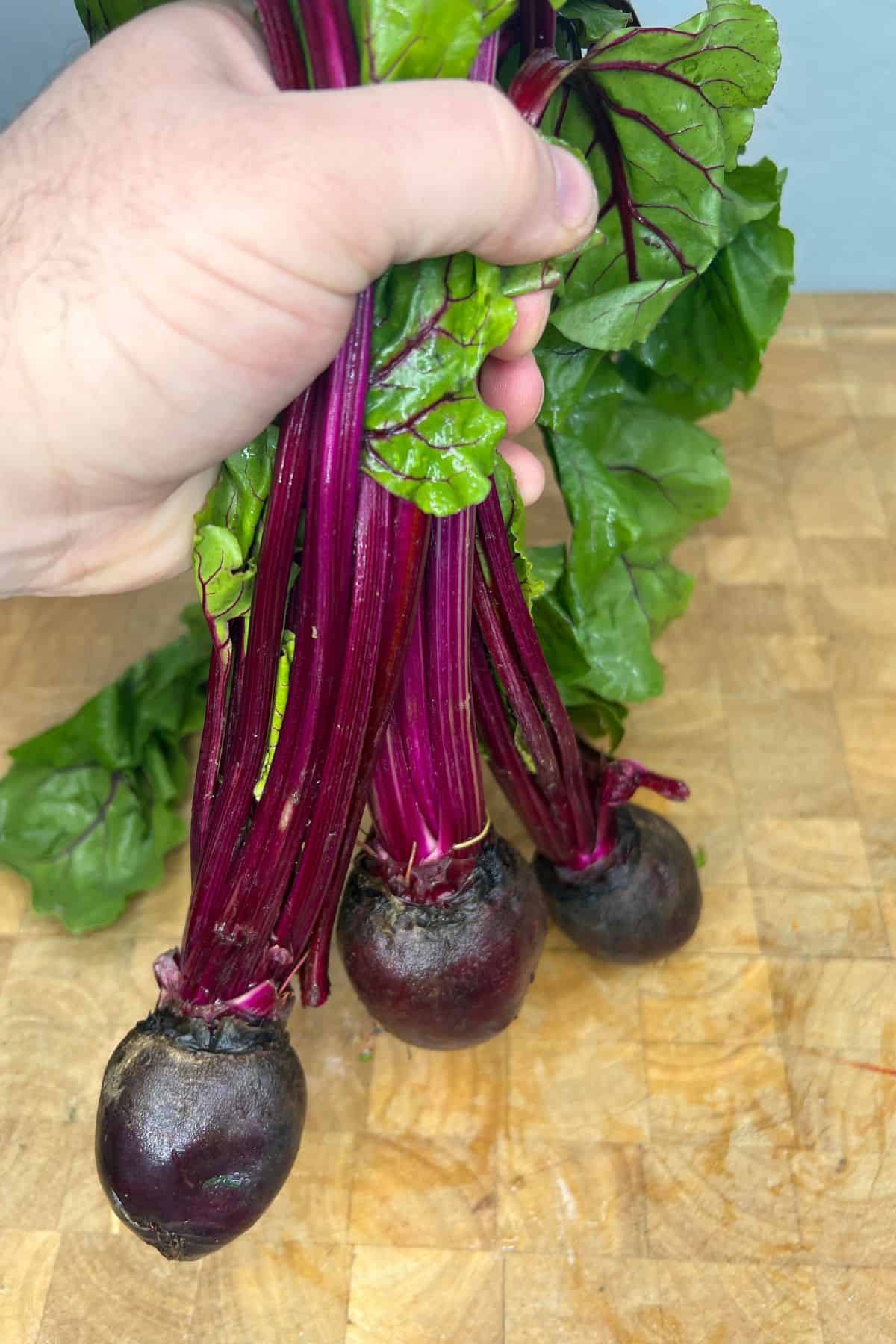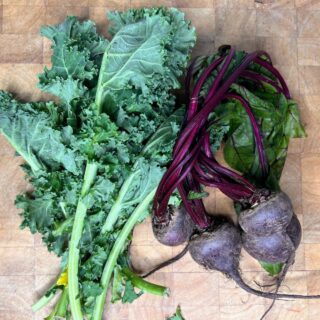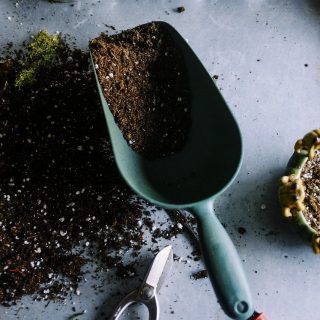With the heat of summer comes a bountiful harvest, but don't let it end there. Plant some of these 15+ Fall garden crops to keep your harvest going almost year round. From leafy vegetables to root vegetables and more, you're sure to find some of your favorites on this list.

Jump to:
What Vegetables Can Be Planted For A Fall Harvest?
There are actually a lot of different vegetables that can be planted for a Fall harvest including: Root vegetables (like carrots, turnips, beets), Leafy greens (like lettuce, spinach, Bok choy), Peas, and Brassicas (like cauliflower, Brussel sprouts and broccoli).

Peas
Peas are a great crop because they continue to produce as you harvest. They are also a pretty fast growing crop. Peas usually need about 50 - 70 days to harvest.
One thing to note about peas is that there are tons of varieties: sugar snap, snow peas and english peas to name a few. Each variety will have it's own requirements, so make sure you read your specific seed package.
Green Onions
Green onions are one of the fastest growing vegetables. They take on average about 50 - 60 days from start to harvest.
They need warmer soil temperatures for seed germination. Typically onions need about 75 degree soil temperature, so these can usually go right into the ground.

Leafy Greens
Leafy greens, is of course, more of a category than one single vegetable. Here you can include vegetables like spinach, lettuce, bok choy, collard and mustard greens.
This group of vegetables tends to mature fast and need cooler soil temperatures for germination. For example, when growing lettuce you need soil temp from 45 - 60 degrees and about 45 - 60 days to harvest.
Though each specific vegetable in this group may have slightly different requirements, they all are generally in the same range as lettuce is.
Kale
We have included kale as it's own entry because most consider it to be a leafy green. However, Kale is actually a brassica crop.
Like other brassica crops, kale needs a lower soil temperature to germinate. But it is pretty fast to mature - usually in 60 days or a little less.
Brassica Crops
Brassica crops are those like broccoli, cauliflower, cabbage and brussel sprouts. Though exact time to maturity will vary from vegetable to vegetable, in general these all take longer than some of the others on this list. The general range is 60 - 100 days.
So, when planting some of these crops, be sure to plant them a little sooner. However, brassica crops do tend to have a good cold tolerance down to freezing temperatures. Therefore you may be able to keep them going even after the first freeze or two.

Root Vegetable Crops
Root vegetables are ones where the part we eat grows under the ground. Good cool weather root vegetables include: Carrots, beets, radishes and turnips.
Days to maturity for these root vegetables tends to be 50 - 70 days. But can depend on the exact crop and variety you have chosen.
Need some help getting your garden crops planned? Check out the Ultimate Gardening Calculators for a system that will auto-calculate for you.
Factors to Consider When Planting Fall Crops
When you are planning and planting your fall crops, it is important to consider a handful of things. These include: soil temperature (for germination), date to maturity and first frost date.
Soil Temperature
Many of these crops will need to be planted in August (or June/July depending on your zone). Which is the time of year that soil temperature tends to be super hot.
Different seeds need different soil temperatures, but some cool weather crops on this list tend to need cooler temperatures under 70 degrees. So, make sure that you monitor your soil temperature before planting.
It may be easier to create a more controlled environment for by starting seeds indoors. That way you can make sure that they germinate and get a good start before transplanting the plants outside.
Date to Maturity
It is important to know how long it will take the crops you plant for a fall harvest to mature and be ready to be harvested. This is because you will need them to be ready before it gets too cold out.
A good rule of thumb is to try and target plants that are ready in about 60 days. This way it doesn't take them more than 2 or so months. If you are planting in say, August, that gives you a harvest starting in October.
First Frost Date
Be aware of the first frost date for your area. You can then work backwards from that date to figure out when the latest start date for your chosen crops are.
Keep in mind that overall cooler fall weather can cause plants to take a tad longer to mature, so you may want to give yourself a 1 - 3 weeks buffer between date to maturity and first frost date.
However, most of the cooler weather crops can handle a little dip in temperature. And, you can extend their harvest season by giving them a little frost protection during the first frost or two.
In Conclusion
Your garden growing season definitely doesn't have to end when the hot days of summer do. With a little planning you can keep on harvesting crops like cauliflower, lettuce and carrots well through the fall months.
If you need help getting your garden crops planned right check out The Ultimate Gardening Calculators so that you have just the amount you need, set aside the right amount of space and know exactly when to plant them.




